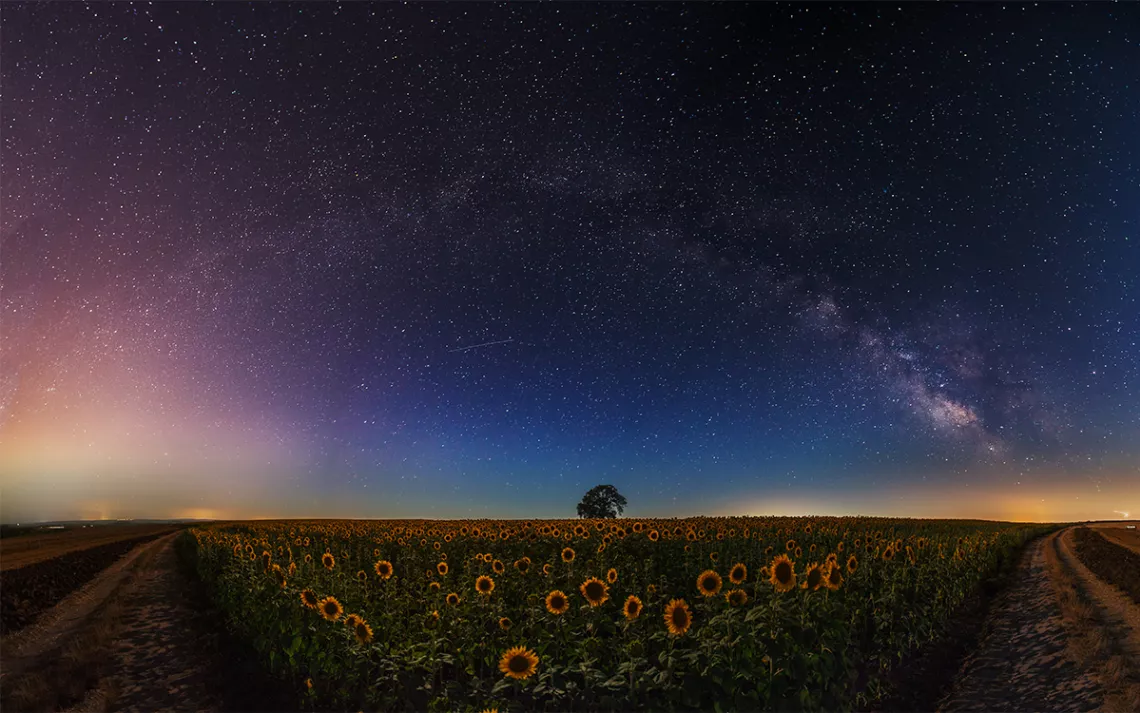Best Astronomical Highlights of 2018
A look ahead (and above)

Photo by valio84sl/iStock
Astronomical observers will find lots of reasons to mark their calendars in 2018. Two supermoons, two blue moons, five planets at opposition, three meteor showers that could produce more than 100 falling stars an hour, and at least one comet all occur in the year ahead, guaranteeing that you’ll have something up above to get excited about each month this year.
Super Moons and Blue Moons
2018 has two supermoons, and they’re packed into the first month of the year. A supermoon is a full moon that occurs around the time of perigee, the closest point in the moon’s orbit around Earth. On January 1 for North America (January 2 in the Eastern Hemisphere), the supermoon has the closest perigee of the year, when it is a scant 356,565 kilometers away. The moon is back in perigee on January 30 at a distance of 359,000 kilometers. The full moon early the next morning, on January 31, is both a blue moon and a supermoon, which will undergo a total lunar eclipse as it sets in North America in the hours before dawn.
With a full moon at the beginning and end of January, the short month of February will have no full moon at all, a circumstance sometimes referred to as a black moon. March will also have two full moons, one on March 1 or 2 (depending on where you live) and one on March 31. Therefore, March 31 will have the second blue moon of the year. This phenomenon of two full moons in January and March with a black moon in February occurs every 20 years.
Meteor Showers
Meteor showers are regular annual events that take place as Earth plows into debris left behind by comets and asteroids that have crossed our orbit. The strongest meteor showers of the coming year are the Quadrantids on January 3–4, the Perseids on August 11–12, and the Geminids on December 13–14. Each of these showers has been known to produce up to 100 meteors or more an hour at their peak of activity.
Planets at Opposition
Planets reach what is called opposition when they are opposite the sun in our sky. When this happens, they rise as the sun sets and cross the sky all night, setting as the sun rises. The window of time in the weeks before and after opposition is great for viewing these planets. Jupiter is at opposition on May 9, Saturn on June 27, and Mars on July 27.
Neptune reaches opposition on September 7 and Uranus does on October 24, but because they are dimmer and require optical aid to see them, they may be harder to spot.
It will be easier to see them when they get close to brighter planets. This occurs for each planet in 2018, but the timing is less than ideal—around sunset when the glow of the recently set sun may make it difficult to see the dimmer planets. On March 28, Venus and Uranus are four arcminutes apart by the western horizon after sunset. Through binoculars or a telescope, Uranus appears as the faint point of light in the same field of view as brilliant Venus. On December 6 and 7, Mars and Neptune are also just four arcminutes apart. On December 6, look for Mars with binoculars or a telescope and you may see the tiny blue disk of Neptune nearby. On December 7, they are still close, but a few intervening stars may make it hard to identify Neptune.
Comets
While new comets can crop up at any time, one periodic comet is returning on a scheduled visit and will be within view through binoculars, or possibly to the naked eye, at the end of 2018. Comet 46P/Wirtanen will be at least within binocular range around Thanksgiving, rising in the southeast in the mid-evening sky. Every day after, the comet will rise slightly higher in the sky, passing through some lesser-known constellations such as Fornax, Cetus, and Eridanus before entering Taurus and brightening to what could be easy visibility without any optical aid. Around the time of the comet’s peak brightness, it will be passing close to the Pleiades star cluster. On December 16, Comet Wirtanen and the star cluster are a bit over three degrees apart.
As the comet passes into Perseus, the moon gets closer to it, washing out the sky and making it harder to spot. On December 23, the comet will be less than one degree from one of the brightest stars in the sky, Capella, and the pair will pass near the zenith during late evening hours. Unfortunately, the moon on this night is just past full and nearby, trying to outshine the comet. The moon rises a bit later each night after it is full, giving you more time in dark skies to search for the comet before moonlight interrupts. If you miss it in 2018, don’t worry—it persists into 2019, and because it’s a short-period comet, it will return in five years.
 The Magazine of The Sierra Club
The Magazine of The Sierra Club



